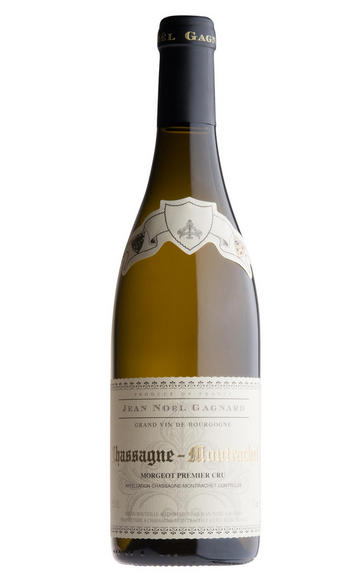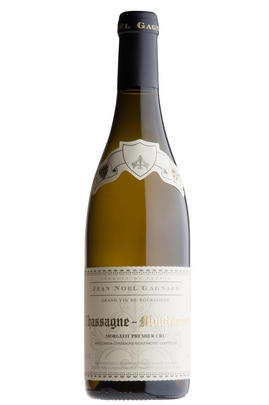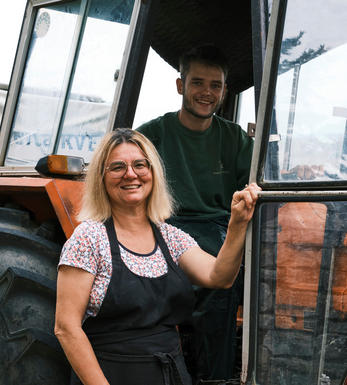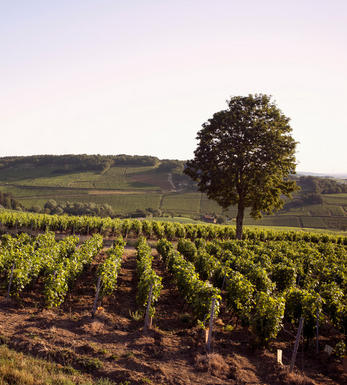
2016 Chassagne-Montrachet, Les Caillerets, 1er Cru, Domaine Jean-Noël Gagnard, Burgundy

Critics reviews
Sadly what is usually my favourite vineyard in this cellar suffered quite a bit from the frost (17 hl/ha). Backward nose, a little oak, a little white fruit. Some weight at the front and quite a lot more behind. Baked apples have moderate acidity and good length. Not quite together, but this should harmonise.
Jasper Morris MW, InsideBurgundy.com (October 2017)
The essence of white orchard fruit, spice and a hint of citrus comprises more elegant aromas. The mouth feel of incredibly rich, full-bodied, and powerful flavours is textured and overtly opulent, all wrapped in a dry, sappy, palate etching finish that brims with minerality.
Drink from 2024 onward
Allen Meadows, Burghound.com (June 2018)
About this WINE

Domaine Jean-Noel Gagnard
Caroline Lestimé took over from her father, Jean-Noël, in 1989, though Domaine Jean-Noël Gagnard still retains his name. The estate’s modern reputation has very much been built by Caroline, who has made it her responsibility to develop the many expressions of Chassagne Montrachet terroirs across her range.
About Domaine Jean-Noël Gagnard
There are 12 different Premiers Crus to choose from; some now carry their own identity, having previously been offered under the larger Morgeot appellation. She has bought more land in Chassagne when available and affordable, and there’s a very well-situated white wine vineyard in the Hautes-Côtes, sold under the L’Estimée brand. Some very attractive reds from Chassagne round off the range.
In the vineyard
The vineyards are all organic, now certified; Caroline plans to put that status on her labels from the 2019 vintage.
In the winery
A little perspective is always an asset with Caroline’s wines: it’s not her style to manipulate or force, and any perception of dumbness is always mitigated once in bottle. Caroline is always very attuned to her wines’ progress during élevage.

Chassagne-Montrachet
When it comes to the world's greatest white wines, the border between Chassagne and Puligny is the ‘X’ that marks the spot, the treasure at the end of the rainbow. Within a few hundred metres lie five wonderful Grands Crus, three of which are in Chassagne. They are led by the luscious, perfumed but variable Le Montrachet, to which Chassagne gained permission in 1879, along with Puligny, to hyphenate its name.
Both Montrachet and the rich, nutty, honeyed Bâtard-Montrachet are shared between Chassagne and Puligny. The fragrant, very fine and rare Criots-Bâtard-Montrachet however, lies entirely within Chassagne's borders. The Grands Crus have their own appellations, which is why Chassagne (or Puligny) does not appear on the label.
Although the most southerly of the three great names of the Côte de Beaune, Chassagne's style is often described as lying between that of Puligny-Montrachet and Meursault: less fine than Puligny, less rich than Meursault but containing elements of both. Chassagne is minerally yet succulent, and often floral with hints of hazelnuts. Despite a bevy of very good Premiers Crus, it is not as good or famous, overall, as Meursault and Puligny, but it is usually extremely good value. Grands Crus should not be opened before eight years of age, and can last for 20 or more. Premiers Crus are at their best from five to 15 years of age; village wines from three to eight.
Perhaps surprisingly, given that the name ‘Montrachet’ is so synonymous with white wine, much of the soil in Chassagne is more suited to Pinot Noir than Chardonnay. Indeed it was only really in the second half of the 20th century that white wines began to dominate here. The reds have a firm tannic style that needs time to soften, with the best examples coming from the Premiers Crus Morgeot, Boudriotte and Clos-St Jean. At their best they combine the weight of the Côte de Nuits with the suppleness of the Côte de Beaune.
180 hectares of village Chassagne-Montrachet
159 hectares of Premier Cru vineyards. Several of the larger ones are subdivided and may be cited under various different names. The best include Caillerets, Ruchottes, Chaumées, La Boudriotte
11 hectares of Grand Cru vineyards: Le Montrachet (part), Bâtard-Montrachet (part) and Criots-Bâtard-Montrachet

Chardonnay
Chardonnay is often seen as the king of white wine grapes and one of the most widely planted in the world It is suited to a wide variety of soils, though it excels in soils with a high limestone content as found in Champagne, Chablis, and the Côte D`Or.
Burgundy is Chardonnay's spiritual home and the best White Burgundies are dry, rich, honeyed wines with marvellous poise, elegance and balance. They are unquestionably the finest dry white wines in the world. Chardonnay plays a crucial role in the Champagne blend, providing structure and finesse, and is the sole grape in Blanc de Blancs.
It is quantitatively important in California and Australia, is widely planted in Chile and South Africa, and is the second most widely planted grape in New Zealand. In warm climates Chardonnay has a tendency to develop very high sugar levels during the final stages of ripening and this can occur at the expense of acidity. Late picking is a common problem and can result in blowsy and flabby wines that lack structure and definition.
Recently in the New World, we have seen a move towards more elegant, better- balanced and less oak-driven Chardonnays, and this is to be welcomed.


Buying options
Add to wishlist
Description
Volumes were significantly reduced here due to the frost and because Caroline had grubbed up some old vines, which had stopped producing a meaningful crop. There is excellent vitality, with a wonderfully energetic, stony purity to the finish. It’s a little tight at present but will fill out with élevage. Cerebral.
Drink 2020 - 2026
Adam Bruntlett, Senior Buyer, Berry Bros. & Rudd (August 2022)
wine at a glance
Delivery and quality guarantee